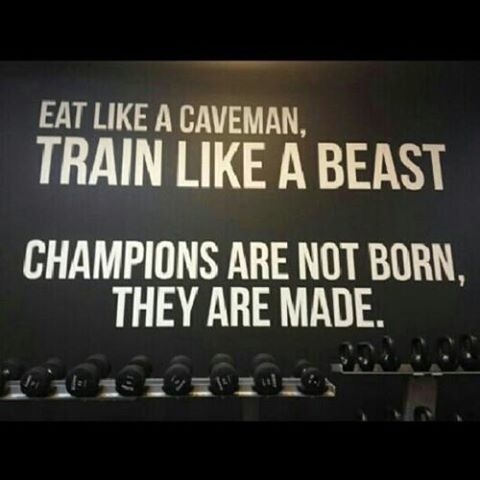
Find out why the under-the-radar vitamins riboflavin and niacin are crucial for optimal energy production—and which foods you can seek out to meet your daily goal!
Riboflavin and niacin may sound like words from another language, but they’re actually vitamins B-2 and B-3, two essential vitamins that play a major role in your ability to exercise. In fact, they are major driving forces for converting carbohydrates into usable energy!
Take a few minutes to learn more about these water-soluble vitamins so that you can be sure you’re getting enough in order to dominate your workouts!
Riboflavin
Why you need it Without riboflavin (vitamin B-2), your body wouldn’t be able to properly release energy from carbohydrates. That is significant beyond high-intensity exercise; energy from carbs is the major fuel for our brains. So come up short in riboflavin, and expect a case of brain fog.
Riboflavin can also help neutralize free radicals.
The B vitamins—or B-complex, as they’re often referred to—work together to enhanced energy production, but also to help each other. Riboflavin is also needed to convert vitamin B-6, which helps the body make hormones like serotonin, into a usable form.[1]
How much you need: Men need 1.3 milligrams of riboflavin daily, while women require 1.1 milligrams.
Riboflavin-Packed Foods
Milk: 27% Per Cup

In addition to being high in protein and calcium, moo juice is a good source of riboflavin.
In addition to being high in protein and calcium, moo juice is a good source of riboflavin, too, which helps your mind and body to continue working hard. This gives you even more of an excuse to wear that white moustache with pride. You can up the nutritional ante further by splurging for milk from cattle that actually had a chance to nibble in apasture, which increases levels of good stuff like omega-3 fats.[2]
Almonds: 17% RDA Per Ounce

A healthy dose of riboflavin is yet another reason to go nuts for almonds. In fact, a New England Journal of Medicine study reported that eat nuts like almonds frequently may help support overall health.[3] The nutrient payload nuts provide may help support many of the body’s functions.
Eggs: 15% RDA Per Egg

The humble egg’s riboflavin load should cement it as a breakfast staple.
It’s already a near-perfect protein, so the humble egg’s riboflavin load should cement it as a breakfast staple. As with most of the nutrients present in the white orb, B-2 is housed in the yolk. So don’t even consider making another tasteless egg-white-only omelet.
Other good sources include liver, goat cheese, cheddar cheese, salmon, mackerel, chicken, ground beef, tahini, wheat bran, and broccoli.
Niacin

Why you need it: Otherwise known as vitamin B-3, niacin is called upon by the human body to make the coenzymes nicotinamide adenine dinucleotide (NAD) and nicotinamide adenine dinucleotide phosphate (NADP). Wishing you hadn’t sleep through chemistry class? No worries—just know that numerous enzymes require NAD and NADP to properly break down carbohydrates, fats, and proteins into energy.
How much you need: Adult men require 16 milligrams of niacin each day, and women should consume 14 milligrams.
Niacin-Packed Foods

Chicken breast is also one of the best sources of niacin in the grocery store.
Always there when you need a reliable source of protein, chicken breast is also one of the best sources of niacin in the grocery store. It’s also rich in phosphorus, a mineral vital to bone growth and maintenance.
Canned Light Tuna: 56% RDA Per 3 Ounces

Long a staple protein among bodybuilders, budget-friendly canned tuna can help stock your diet with energy-generating niacin. You’ll additionally benefit from good amounts of vitamin B-6, vitamin B-12 and the antioxidant selenium. You can also use tuna stuffed into pouches as a convenient way to give your sandwiches and salads a shot of niacin and top-notch protein.
Peanuts: 19% RDA Per Ounce

While not as sexy as pistachios, almonds, and other nuts, peanuts pack the most niacin. And not to be overlooked is that this nut—well, technically a legume—also has the most protein: 7 grams per ounce, which is about 25 peanuts. So consider a handful of peanuts the next time a snack attack strikes. To keep them healthier, look for dry-roasted and unsalted varieties.
Other good sources include peanut flour, anchovies, fresh skipjack tuna, salmon, swordfish, sunflower seeds, turkey, and beef sirloin.
So stick with the best lean sources to get that lean Muscular look. You are what you eat. So eat well and TRAIN LIKE A BEAST!!!!!!!!!!

Your Friend and Coach,
Crystal aka Barbell Barbie. NY
References
Vitamin B2 (Riboflavin). (2015, August 5). Retrieved from https://umm.edu/health/medical/altmed/supplement/vitamin-b2-riboflavin
Daley, C.A., Abbot, A., Doyle, P.S., Nader, G.A. & Larson, S. (2010). A review of fatty acid profiles and antioxidant content in grass-fed and grain-fed beef. Nutrition Journal, 9(10), 1-12.
Bao, Y., Han, J., Hu, F.B., Giovanucci, E.L., Stampfer, M.J., Willett, W.C. & Fuchs, C.S. (2013). Association of nut consumption with total and cause-specific mortality. New England Journal of Medicine, 369(21), 2001-2011.
